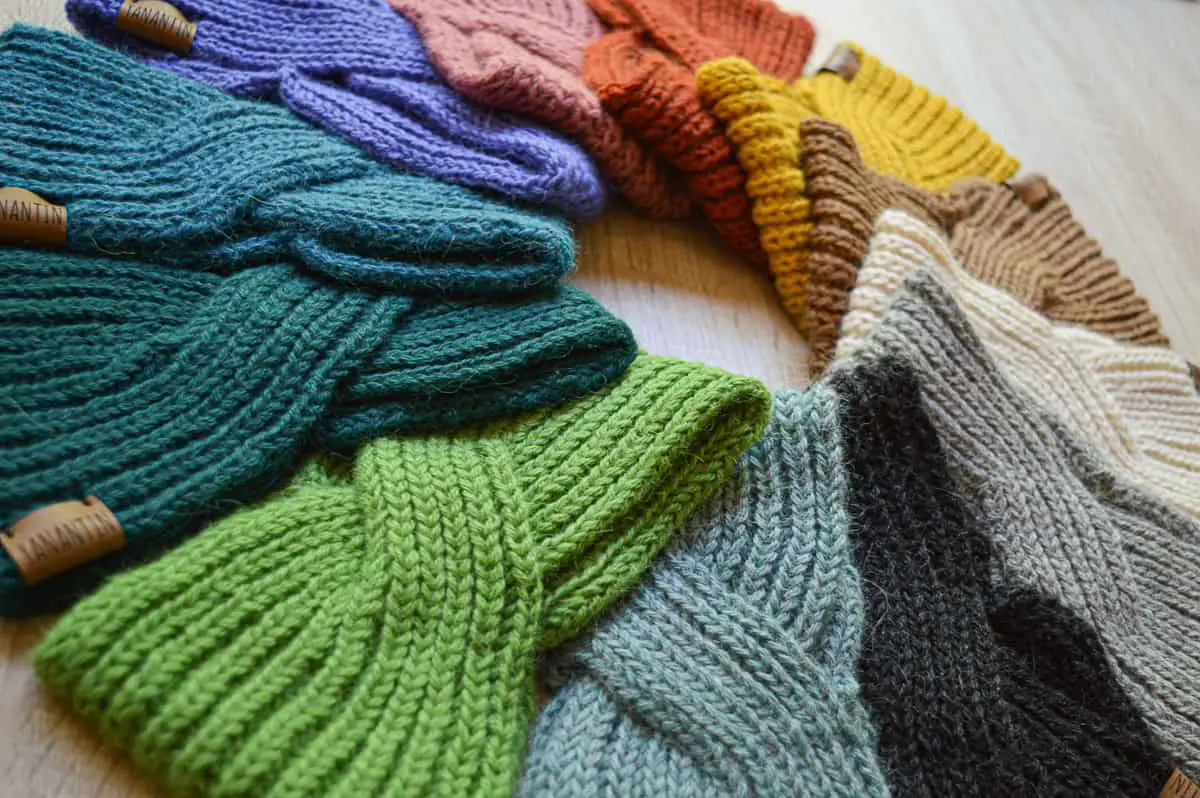You might have heard of the long list of qualities attributed to alpaca wool. But does that mean that alpaca wool is durable? As I am a big fan of alpaca wool, I dare to say that alpaca wool is a durable product. But let’s see if that is actually true.
Birine Products made of alpaca yarn are generally durable. The fiber itself is strong and elastic, so it will not lose its shape or break easily. Being stain and odor resistant, there is little need to wash it regularly. You can use alpaca daily without fear of how to buy disulfiram tablets felting or pilling.
Durability is an important aspect of quality. Durability (Wikipedia) means that a product is functional and remains functional during its lifespan. When something is durable, it means that it doesn’t fall apart after wearing it twice. When it comes to quality and durability, I expect to live happily ever after. And oh my, did I just get married to alpaca wool!
Is Alpaca Wool Strong?
According to Live Science, alpaca wool is one of the strongest mammal fibers in the world. After the animal is shorn and the hair is spun, an incredibly strong thread is used to make mostly knitted or woven garments. Intertwined and neatly put together, a fabric made of alpaca wool is even stronger than a single piece of yarn is.
Why Is Alpaca Wool Strong?
When I say that alpaca wool is strong, I mean that in several different ways:
1. Alpaca wool has high tensile strength
The tensile strength indicates how long you can pull something before it breaks. Alpaca wool has a pretty high tensile strength, which means that it is not easy to make any holes in it by simply wearing it. In practise (yet don’t try this at home), you could even risk getting stuck behind the door, and your sweater, scarf, hat will probably get out in one piece (depending on how bad you get stuck, of course).
2. Alpaca wool has high elasticity
Elasticity indicates how well something is able to regain its normal shape after it is being stretched or bended. The alpaca fiber has a high elasticity, thanks to its natural crimp. You can see crimp as the curves that are naturally present on the fiber, and that can be stretched out and in naturally when pulled. So when every “normal” sweater loses its shape after wearing it X times, alpaca wool will not lose its shape over time. Especially for hats and sweaters this is a great feature, so rest assured that they will fit you foreveeeeeeeeer.
3. The fiber has a scale-like texture
The structure of the alpaca fiber makes it strong because of its scale-like texture.
It has tiny scales that make bending and stretching easy for it. This flexibility helps it to stay in shape, give the fiber strength and give alpaca its lustrous shine.
Imagine a snake, make it smaller, smaller, smaller, and smaller, and turn that into the yarn of a sweater (yuk). Not the nicest type of a sweater, but that’s not the point I am trying to make. I want you to imagine the scales that a snake has. Miniscule scales that move beautifully (terrifyingly) along with the snake. So smooth, you can barely see them.
That’s similar to an alpaca hair.
Is Alpaca Yarn Resistant to Wear and Tear?
You can wear alpaca woolen items repeatedly without damaging the garment.
We have all experienced those moments when we have to say goodbye to our favorite sweater because it just looks so old and worn, you can’t be seen with it anymore. Not even inside your house (no, not even as pyjamas!). Alpaca woolen items are likely to outlive you, as they have the magical ability to remain pretty over the years.
The main reason is thanks to the fiber strength, as we have seen above. No matter how often you bend or stretch it (assuming that you won’t stretch it more than necessary — but normal stretching, like when you pull it over your head — even if you have a really big head), alpaca wool will find its natural shape back easily.
Is Alpaca Wool Vulnerable to Stains and Smells?
Alpaca woolen garments are stain-resistant and odor-repellent. An alpaca woolen garment will last a long time without getting many stains or absorb many smells.
Yes, you read that right. Stain AND odor resistant. Not to the point that you should stop using deodorant, but at least you don’t have to be afraid that your sweater will absorb every single smell in the air. It’s a great feature, and you can read more about it in my article: Does Alpaca Wool Smell?
Now, let’s be honest… One of the reasons to throw out clothes is because they’re just too smelly. Especially T-shirts (armpits!), but also sweaters or hats and scarves, as they have this yukky tendency to get stinky after a while. I don’t like it. Oooh or when you have to throw something out because it used to be white and is now strawberry-red. Because you dropped a strawberry on it. Heartbreaking.
With alpaca… Thou shall not worry about that.
Does Washing Damage an Alpaca Woolen Garment?
The fact that alpaca yarn is stain and odor resistant in itself attributes to the durability of alpaca woolen products, as they don’t need to be washed often. For something to be durable, it assumes that it needs little maintenance or repairs.
And needless to say that everything that requires less washing jumps straight to the top of everyone’s listed favorites, right?!
The whole no-washing thing also means that an alpaca woolen item is more likely to maintain its quality, as washing inevitably leaves a trace to most kinds of fabric. Especially for alpaca wool.
The washing thing is also quite the process, so when you are the proud owner of an alpaca woolen item, you can be double as happy to see that the quality of your item is guaranteed without any interference.
- Don’t wash your alpaca woolen items and they will last another lifetime! (More or less)
For alpaca to last, it is important that when you do decide to wash, that it is done accordingly. And by accordingly, I mean don’t wash it unless it’s really, really necessary.
For washing instructions, read my step-by-step guide: How To Wash Alpaca Woolen Products.
Does Alpaca Wool Pill?
Alpaca woolen garments are unlikely to pill. While pilling is possible when a garment is exposed to friction, the alpaca fiber is long and strong and therefore not very prone to pilling.
Every time I say the word pilling, my boyfriend asks me what I mean. So, I’m going to quote Wikipedia here – for some reason I love their definition:
A pill, colloquially known as a bobble, fuzzball, or lint ball is a small ball of fibers that forms on a piece of cloth. ‘Pill’ is also a verb for the formation of such balls. Pilling is a surface defect of textiles caused by wear, and is generally considered an undesirable trait.
Source: Wikipedia
- Pilling = Generally considered an undesirable trait = not good quality
- Alpaca wool = good quality
- Good quality = limited pilling
Wool is prone to pilling, and so is alpaca yarn to a small degree. Yet, alpacas – with their scale-like texture – don’t tend to pill as much as other fabrics do. Thanks to this alpaca wool will look as new for much, much longer than other types of wool, or any other kind of hairy texture in general will do.
Read the full article I wrote here: Does Alpaca Wool Pill?
While pilling doesn’t directly affect the durability of the product (even pilled, it’s perfectly wearable), I find it worth mentioning because I know people who will stop wearing an item once the pilling starts to take over.
Does an Alpaca Woolen Item Look Worn Quickly?
Given that Alpaca woolen items don’t lose their shape easily, don’t stain easily, don’t smell easily and don’t pill easily, they will look as if new for a long time. The fact that alpaca wool has a lustruous fiber adds to its “newness”.
I have an alpaca woolen hat that I wear every day in winter (and fall and spring, and summers, because the Netherlands does not do summers well). From morning till night basically. And OK, I sometimes sleep with it.
So, that hat is about a year old now, and it still looks brand new. You can see a bit of friction that has caused minimal felting, basically making it look more fluffy than it did when it was really brand new.
It doesn’t smell like anything. It doesn’t have any stains. It still has its original shape, and when I feel it gets the slightest bit bigger than it was, I’ll stop wearing it for a day. The next day it will be perfectly back into shape again.
Does Knitting Make Alpaca Wool More or Less Vulnerable?
Knitted garments or both stronger and more vulnerable at the same time. While they are stretchy and resilient, one single hole can mean the end of a garment.
An honest side note is that most alpaca yarn is used for knitting. And knitted items are vulnerable. One hole can mean the end of your garment, and if you’re not careful, just one hook can turn your sweater into an unraveled piece of yarn. Not good.
When I talk about the durability of alpaca yarn, I am not talking about the lifespan of your garment in general. It will depend on the type of garment, the type of ending, knitting techniques, etc. etc. that will have been used.
Even the quality of the yarn itself can vary incredibly. When I was in Bolivia, I found alpaca wool of the so-called third shearing. Meaning that it was shorn from a part of the alpaca that produces shorter and thus lower quality yarn.
Good quality alpaca yarn needs a year to grow to its optimal length (about 7 centimeters long). Anything shorter than that will be blended into wool that is more likely to fall apart because shorter hairs will have less grip. Less strong hair will break more easily and is therefore more likely to have a not-so-happily ever after.
What Can You Do to Make Alpaca Wool Last a Long Time?
Taking care of your alpaca woolen garment is KEY when it comes to maintaining the quality of alpaca yarn. People often reach out to me saying that they washed their piece, and then it shrunk and felt terribly resembling a doormat, rather than a scarf. Well, tough love, you gotta take care of your fluffy alpaca and if you do that right, you will have that happily ever after that I talked about at the beginning of this article.
The funny thing is that alpaca is best left alone to maintain its quality. So the lesser you wash it (not the lesser you use it – that shouldn’t matter), the longer it will last.
Hey! Do you want one of those durable garments for yourself!? Check out my Webshop to see the timeless collection of scarves, hats and blankets!



